What is the best way to lock up your gun on a motorcycle?
Jan 17th 2020
What is the best way to lock up your gun on a motorcycle?
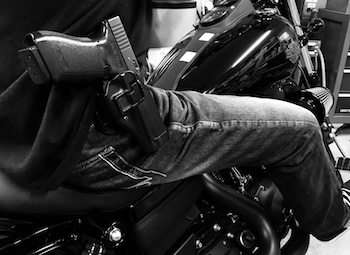
Riding a motorcycle gives you freedom seldom felt inside a car, but being able to comfortably carry a firearm while on a motorcycle can be a difficult challenge.
Out of sight, out of mind is often a phrase we hear in the United States. This is wonderful if you're in a car, and it's wonderful if you have a concealed carry permit but this is seldom the situation you find yourself when on a motorcycle. You're often exposed and so is your equipment and gear. This can make carrying a firearm on a motorcycle a difficult and tricky process.
There's two options here:
- You can carry it on your persons.
- You can carry it in your equipment.
Carrying firearms on your body
First, we're going to address carrying a firearm on your persons. Now, there's several different options for having a carry gun on your persons or body when riding a motorcycle and here some of your options:
1. Waist holster
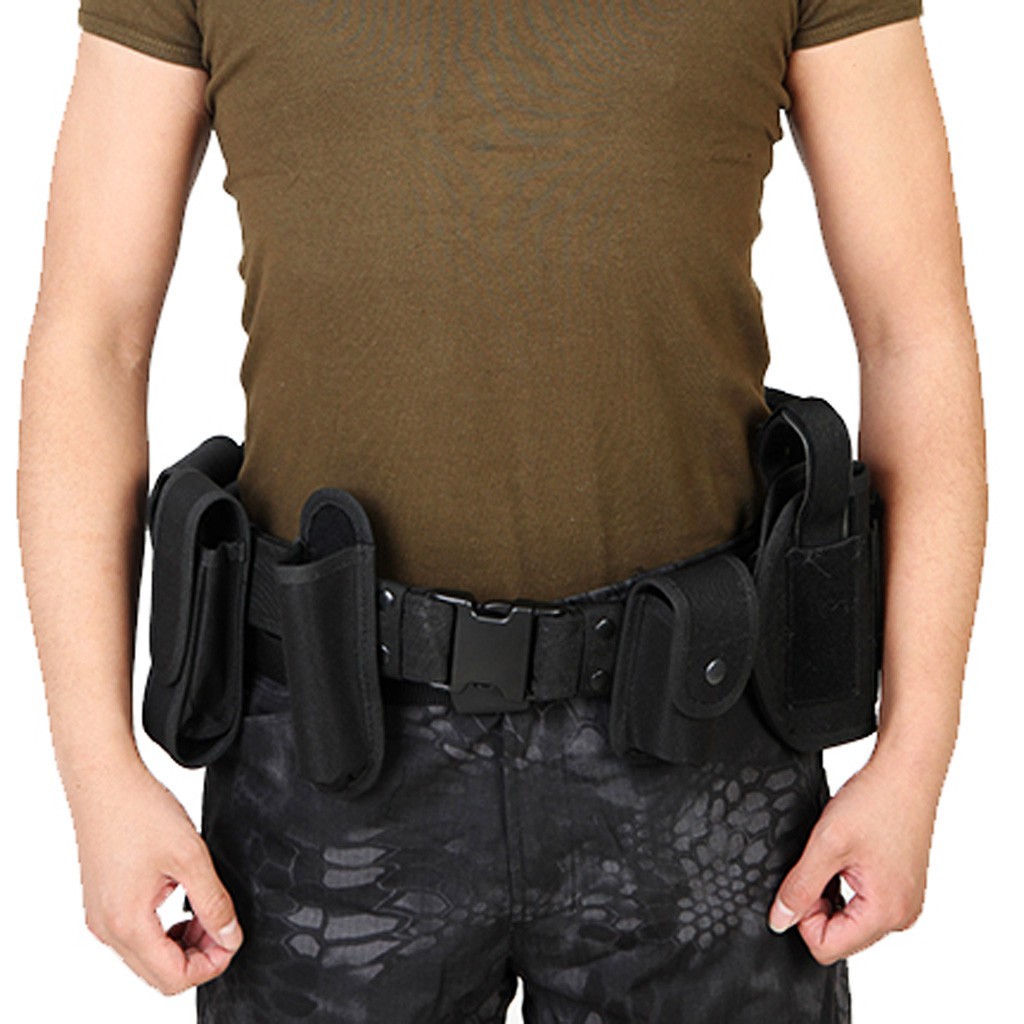
This is a holster that is either on the left or right side of your body and allows quick and easy access and usually provides adequate concealment ability. The problem with a waist holster is that it can cause chafing on long excursions riding a motorcycle.
2. Shoulder holster
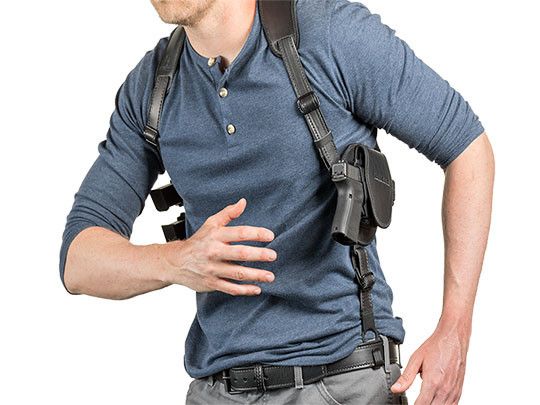
A shoulder holster can be quite comfortable. It mounts across the shoulder, distributes the weight evenly, is easy to conceal while keeps the firearm very secure.
Now, one thing you always want to consider on a motorcycle is what happens when you wreck? Well, a shoulder holster will provide the most security in case of an accident. But because it is so close to your body accidental dish charges could have a more severe effect.
3. Ankle holster

Ankle holster, which is possible on a motorcycle, though not recommended unless you have a very secure holster. Think about this, you're driving down Main Street, you accidentally hit a bump in the road, your ankle falls down, and when you quick whip it back to the motorcycle, you find that it's a pound and a half lighter than it was before. You look back to see your pistol in the middle of Main Street. This is not a good scenario.
Unless you are fully confident in your ankle holster, I do not recommend carrying a firearm on a motorcycle in an ankle holster.
4. Small of back
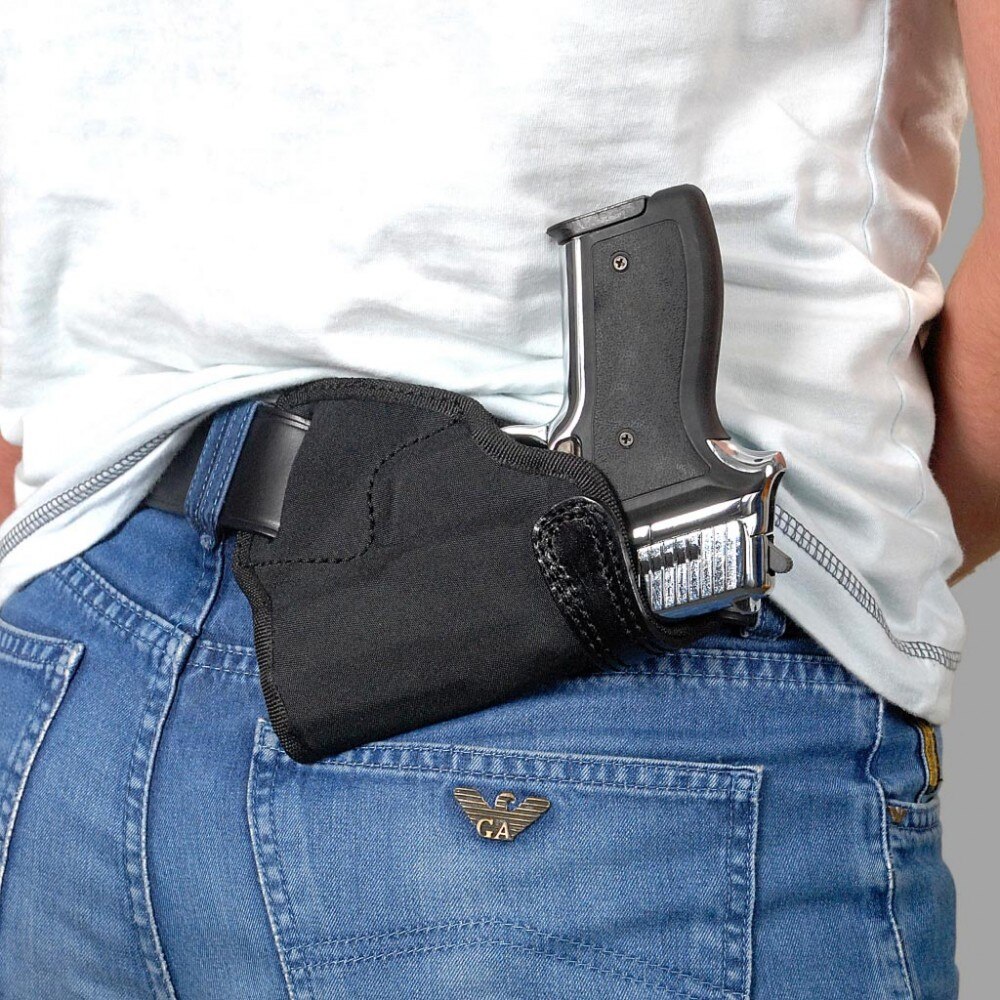
The small of the back is also an excellent method for carrying a firearm. It works well great depending on the riding style that you prefer. I prefer riding a sports bike so the small of back is not a good option for me because when you're hunched over around the fuel tank, the small of back is often a tight or exposed location.
Concealability on a sports bike is pretty much nonexistence, but on a cruiser, dual sport or even a dirt bike, you can often wear baggy clothing and the small of back becomes a comfortable place to carry. Of course, whenever you're carrying a firearm on yourself, you need to be concerned with licensing.
A lot of states allow open carry and a lot of states allow concealed carry permits. It's up to you to know which state you're riding in and what laws apply to you, and then apply those laws when you're on a motorcycle as well as walking down the street. Be careful of crossing state lines as well.
5. Backpack

A backpack is an excellent option for transportation. They are common, easy to use, and are always secured to your body. You can often pack extra gear such as rain clothes to cushion your backpack, and most backpacks have a wide range of compartments ranging in sizes. A loaded handgun in a backpack is often considered concealed, but unloaded pistol in a case is considered transporting. This varies varies from state to state so be sure to check your local laws.
Carrying a firearm on your motorcycle.
There's many different things to consider here as well. The first we're going to start with is the type of bike. The reason we want to consider the type of bike concerns theft and security.
1. Dirt bike

Theft here, of course, is pretty high. Anybody can grab your bike and throw in the back of a pickup truck, depending on the weight and size of the bike.
So, securing a firearm to a dirt bike is likely not a good idea.
2. Dual sport

On the other hand, are substantially heavier and a lot more difficult to steal. It's much easier to carry a firearm on a dual sport and theft is much less likely due to the design and weight of the bike.
3. Sports bikes

Sports bikes are pretty difficult to steal and also very easy to carry a firearm on if you have saddlebags. The fairings on a sports bike generally make them look sleek and any objects out of position or out of the ordinary can be easy to spot on a sports bike.
4. Cruiser
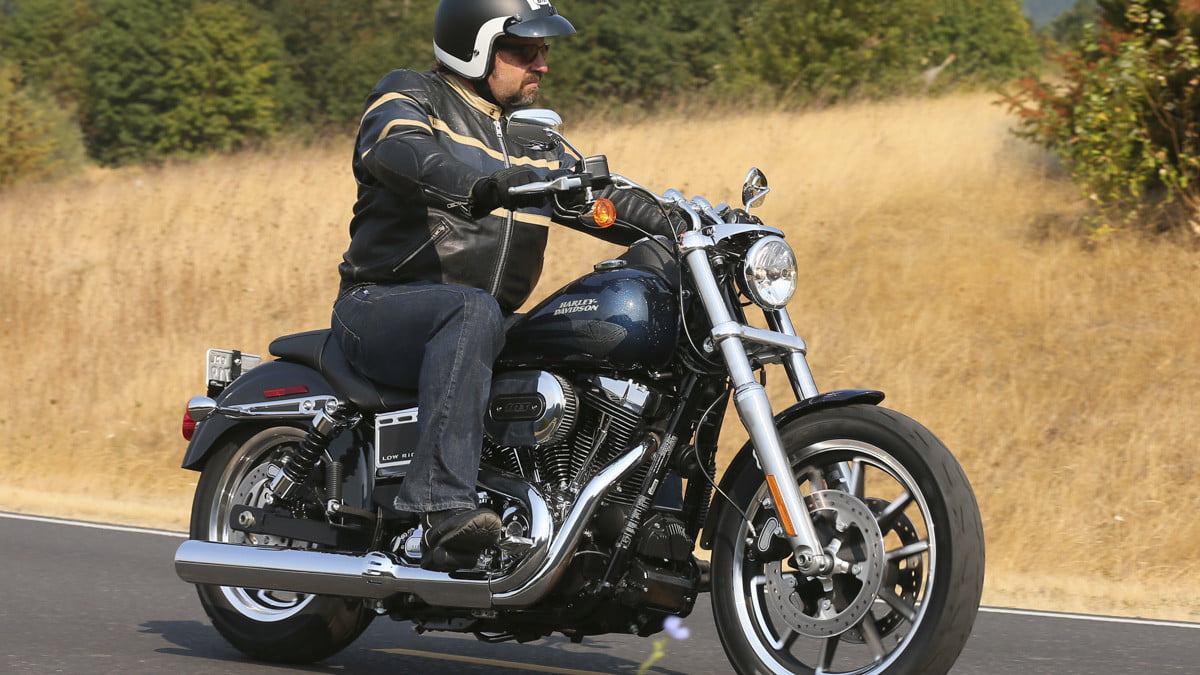
They're hard to steal, they're secure, and typically the people that ride a cruiser are not the type of people you want to steal from, nor are they the type of bikes you want to mess around with.
Type of saddlebags
Now, if you decided that you want to carry your firearm on your bike and you decided that the type of bike you’re planning to use is secure from theft, you're going to want to consider what type of saddlebag you're going to want to use.
There are several main types of saddlebags and many more variations from there and here are some:
1. Soft bag
Soft bag is usually made a canvas, leather or nylon and it can strap to the back or front of many different motorcycles. Oftentimes they are universal.
The pros are there affordable and easy to install. The cons are they're very easy to steal and not secure valuable very well.
Anybody with a knife can typically remove a soft saddle bag and of course, whatever contents are inside.
2. Tank bag
Technically still considered a soft bag, a tank bag is unique in that it mounts securely to a tank and is difficult to remove unless you know where the latch is. Like all soft bags, they are susceptible to access from a box cutter, razor blade or kitchen knife.
But unlike most soft bags, they do offer an easy to access position while you are riding, meaning that you can access your firearm while in the saddle, whereas side soft bags are more difficult to access from the saddle.
Tank bags are easy to take with you. You can detach them, a lot of them have handles so it can be carried with you if you leave the bike unattended.
3. Hard bags
The most secure of all the bags and likely the most recommended though they are the most expensive.
Hard bags are great because they usually attach securely to your bike. They're not easy to remove, they are not easy to get into, and they often come with locks. A lock box inside a locked hard bag on a 1000lb motorcycle is decently secure, unless someone knows it's there and has the motivation to do anything to get it.
Frame mounting

The other option is to frame mount your firearm. If you're carrying a larger firearm, say a rifle or a sharp shotgun, mounting it to the bike frame may be one of your only options. Now, there are several manufacturers such as Blac-Rac that make firearm carry equipment available for motorcycles.
You will often find this available to police officers and other law enforcement, and frame mounting firearm equipment can also be applied to the inside of a hard case as well as standalone equipment on most any motorcycle.
The problem with frame mounting a firearms is there's no concealability and they are open to the elements. Most people do not want their firearms rained on nor do they want them getting dirty when they're riding from place to place.
Liability
One thing to consider regardless is liability, what is the liability you're introducing by carrying a firearm on a motorcycle?
- If it's on your body, you run into the liability of an accidental discharge.
- In case of an accident, you run into liabilities of licensing.
- If you carry it improperly and you run into the liabilities of theft.
Depending on how you carry a firearm, it could be construed as concealed depending on where you live. You also run into the liability of theft, if your firearm or bike is not adequately secured. wrecking is always a consideration and always raises liability. This liability is increased if a firearm is on your body.
If emergency personnel are trying to save your life, having a firearm strapped across your chest will provide difficulty and cause for pause with the emergency workers. Whereas having it attached to your bike may provide liability issues down the road when you go to recover your bike and can also lead to criminal prosecution depending on the law enforcement agency and their jurisdiction.
Public areas
Lastly, we want to talk about school zones and bars.
School zones typically are gun free zones. The act of carrying a firearm through a school zone on the street could be criminal. Since you're visible to the public on a motorcycle, open carry of a rifle or pistol through a school zone is not recommended. Typically, they're highly patrolled due to the decrease speed limits that are found while school is in session.
Bars, sometimes are no go zones. Coming from Montana, it is illegal to carry a firearm into a bar. Like most people, having to leave your firearm in an unsecure saddle bag on easy to steal bike is not an option either.
So, if you frequent bars, school zones or other areas where open or concealed carry is not an option, you do not want to bring a firearm with you. That could open you to prosecution. Otherwise you have to be careful in considering what type of bike you want to carry on, what type of bag you want to use, and the liabilities that you are taking on as a result of that decision.
